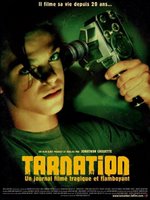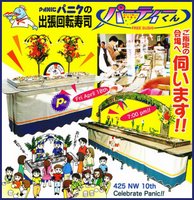
This weekend I had the opportunity to look over and use the Epson MovieMate 25, the new, all-in-one DVD projector system, which currently retails for around $1200.
The Epson MovieMate is sold as a package which includes the projector, a built-in DVD player, a built-in 2.1 sound system, and an 80" screen. At $1200 it represents a pretty good deal: digital projectors, at the bottom of the line, begin in the $1000 range, DVD players begin at around $50, passable sound system $200, and screen $150.
The Epson MovieMate, unlike a plasma screen, is incredibly simple to set up. (For my complete comparison of digital projectors to plasma screens click
here). We had it playing just a few minutes after we took it from the box. Controls for adjusting the image and focusing were clear and easy to use.
The easiest place to put the machine is on a coffee table in front of the couch where you plan to sit when you watch movies. However, the lens is adjustable so that the projected image on the screen will not be distorted even if the machine is at an angle to the screen. Therefore, a side table or any number of other arrangements would work nicely as well. It may seem obvious, but one of the most important things to know about the MovieMate (and any other digital projector) is that you will need a dark room to watch it in. Although you will get a decent watchable image in the daytime, the darker the room is the better your image will be. Even eliminating small sources of ambient light will produce a dramatically better image.
The Epson MovieMate is attractively designed, looking like a square, chunky white robot. It's a simple design that's pleasing, but also unobtrusive. The screen comes in a long, narrow, black carrying case which sits on the floor on built-in feet. You pop open the top, unfold a central stand and then unroll the screen vertically. The small sound system is surprisingly impressive. There are no surround speakers, but the provided speakers do a good job of projecting sound convincingly around the room. The sub-woofer is small, but adequate: it managed impressive effects. It's also possible to connect the MovieMate to another sound system, if you'd like to, say, connect it to a separate 5.1.
The MovieMate also has RCA-video-in hook-up so you could concievably connect it to your VCR to watch your old video collection on the big screen. It also reads picture CDs so it would be a great way to do family slide shows.
In order to test the machine I watched
Fassbinder's Whity. I also took a look at pieces of
Fellini's Roma, a recording of the ballet
Coppelia, an episode of
Homicide: Life on the Streets, the animated film
Watership Down, and the black and white film noir
Strange Love of Martha Ivers. All of them looked fantastic on the big screen. As I've said before, there is simply something ineffable about projecting a movie, something that isn't replicated any other way. Images were large, sharp and colorful.
Roma was particularly breath-taking. Animation, if you're a fan, is one area where the MovieMate particularly shines.
One of the problems of digital projectors for some people is that they notice rainbow effects in the projected images. For the people who see them, rainbow effects can range from a minor nuisance to a major problem, causing headaches and irritation, even making movies unwatchable. (It's therefore essential to test any digital projector before you buy it to find out if you are one of the people who is sensitive to rainbow effects!!) . I did not notice any rainbow effects in the movies I watched. There was a small "screen door" effect, but it was not at all obtrusive and after a few moments my attention was drawn elsewhere and I didn't notice it any more. Others in the room didn't notice it until I pointed it out, so it's possible I only saw it because I was looking for it. (Screen door effect refers to small digital cross-hatching in the image, as if you were looking at the image through a screen door).
The Epson MovieMate is one of the best options for people who want a home theater projector system, but who don't want to spend a lot of money or time installing something complicated and expensive. Sharper images and more impressive sound are certainly possible, but at much greater expense. All in all, a great little machine.
 Roma (1972) is Fellini's tribute to the chaotic, jumbled, surreal city of Rome. Some viewers might find the film's lack of a traditional plot and characters a bit too chaotic and directionless, but in my opinion, it's one of the film's strengths. Freed from any allegiance to plot or character, Fellini roams the city, past and present, real and imagined, unhinged from any purpose other than the sheer joy of throwing his frenzied fancies onto the screen, one after the other.
Roma (1972) is Fellini's tribute to the chaotic, jumbled, surreal city of Rome. Some viewers might find the film's lack of a traditional plot and characters a bit too chaotic and directionless, but in my opinion, it's one of the film's strengths. Freed from any allegiance to plot or character, Fellini roams the city, past and present, real and imagined, unhinged from any purpose other than the sheer joy of throwing his frenzied fancies onto the screen, one after the other.







